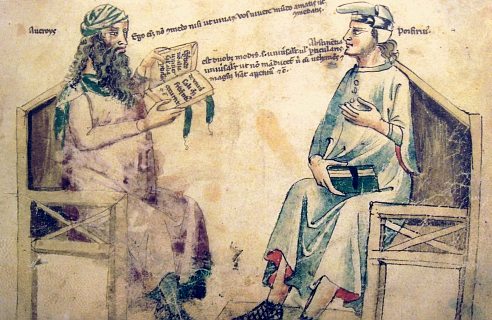
Our regular readers are aware that we like and promote Emmet Scott’s work.
His amazing book, Mohammed and Charlemagne Revisited dramatically changed our understanding of the roots of Western culture and the extent to which those roots were deformed by fear. His knowledge, now being adapted by others, is spreading among the non-indoctrinated students of history.
Mr. Scott also posts occasional essays at The New English Review. When NER was taken down last month by a DDOS — a Distribued Denial of Service attack — it was out of operation for quite some time. A few days before the site went dark, Scott had published an essay debunking Islam’s purported “golden age” in Spain. With only a momentary exposure before that cowardly attack, “Myth” didn’t draw the audience it normally would have. Thus at the request of NER and Mr. Scott, here is an excerpt “The Myth of Spain’s Golden Age”. It can be read in its entirety here.
Following the excerpts below you’ll find a link to Mr. Scott’s other essays at The New English Review and — ta da! — information on an upcoming book.
NOTE: The occasional emphases below are mine, as is the middle section of observation on Mr. Scott’s findings.

He begins:
We have traditionally been told that the first two centuries of the Spanish Emirate, supposedly founded in 756 by Abd’ er Rahman I, constituted a veritable Golden Age of Spanish history. And indeed the opulence and prosperity of Spain during these years is contrasted very favorably with the poverty and ignorance of Christian Europe in the same period.
The following description of eighth-tenth century Cordoba, written by English historian H. St. L. B. Moss in 1935, may be regarded as fairly typical of the genre:
“In Spain … the foundation of Umayyad power [in 756] ushers in an era of unequalled splendour, which reaches its height in the early part of the tenth century. The great university of Cordova is thronged with students … while the city itself excites the wonder of visitors from Germany and France. The banks of the Guadalquivir are covered with luxurious villas, and born of the ruler’s caprice rises the famous Palace of the Flower, a fantastic city of delights.”
The picture Moss paints was derived from medieval Arab annalists, who spoke of a city of half a million inhabitants, of three thousand mosques, of one hundred and thirteen thousand houses, and of three hundred public baths — this not even counting the twenty-eight suburbs said to have surrounded the metropolis.
GO READ THE WHOLE THING.Over the past sixty years intensive efforts have been made to discover this astonishing civilization — to no avail. Try as they might, archaeologists have found hardly anything, hardly a brick or inscription, for the first two centuries of Arab rule in Spain. Between 711 and 911 there is almost nothing, with substantial remains only beginning to appear around 925 or 930.
No comments:
Post a Comment